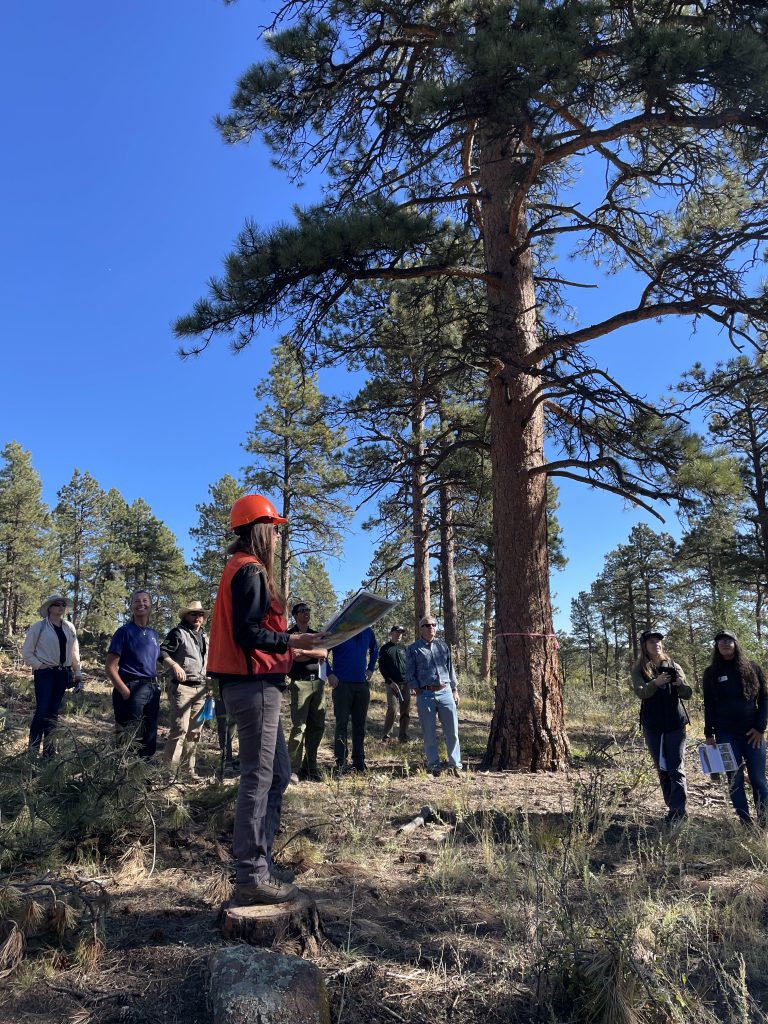RMRI Celebrates Shared Stewardship in the Upper South Platte
In late September, the Rocky Mountain Restoration Initiative hosted a partner meeting in Golden, Colorado. This collaborative effort, co-convened by the National Wild Turkey Federation and the USDA Forest Service, established in 2019 with the primary goal of demonstrating the Forest Service's Shared Stewardship strategy in action.
The gathering brought together various partners from across the state on Sept. 26 to celebrate the Upper South Platte landscape and engage in discussions surrounding the challenges linked to the implementation of treatments, social license and workforce capacity, as well as the achievements made over the past year.
Discussions centered on the vital role prescribed fire plays in landscape management and how partners can use fire as a tool to mitigate wildfire while creating healthier, more resilient forests.
"What makes RMRI successful, in my opinion, is our ability to communicate and collaborate,” said Elizabeth Dowling, NWTF Rocky Mountain Restoration Initiative coordinator. “I'm very grateful that so many local and broad, state-wide leaders had the opportunity to gather, communicate and hear from one another. I'm thankful for the time we had to discuss our accomplishments and reveal what areas we still need to focus on in order to elevate our pace and scale. Last year, we highlighted our southwestern landscape, and I am elated that we were able to do the same for the Upper South Platte this year."
Thus far, the RMRI partnership in the Upper South Platte region has significantly increased the pace and scale of prescribed fire treatments, thanks to successful collaborations that transcend conventional boundaries. During these discussions, several challenges emerged, with social license, workforce capacity and biomass utilization standing out as the most prominent.
One major barrier to increasing restoration treatments and mitigating the threat of catastrophic wildfires is the shortage of available workers and capacity within the forest product industry. The demand for workers far exceeds the available supply, partly exacerbated by difficulties in accessing affordable housing for potential employees. Additionally, partners emphasized the importance of educating students about career opportunities within the industry and supporting programs that facilitate entry into the field.
Finding ways to use biomass presents another obstacle to scaling up landscape work. Forest restoration often involves the removal of substantial quantities of small-diameter and low-quality wood, commonly referred to as "woody biomass.” This material, composed of woody plants, limbs, needles and leaves, is frequently generated as a byproduct of land management on both public and private lands.
Due to its limited commercial value in current markets, removing it is costly, with little or no financial return. Many forest landowners cannot afford such a significant economic investment, resulting in fewer treated acres and an increased risk of wildfires.
The solution lies in developing markets for biomass, which can help reduce the cost of restoration and enable the treatment of more acres. This underscores the need for innovative approaches to using small-diameter trees with limited industry value.
Hearing from the Colorado Mass Timber Coalition about their innovative solution around mass timber (a low-carbon alternative to concrete and steel made from compressed layers of wood) as a building material has the potential to offset these challenges.
Following the initial meeting, partners conducted a field tour to three sites where conservation work had occurred over the past year. This tour provided a firsthand look at the tangible outcomes of shared stewardship.

The locations included ongoing treatments at Alderfer/Three Sisters Park near Evergreen, Colorado, the U.S. Forest Service Sand Springs Prescribed Fire Site near Buffalo Creek, Colorado, and recent treatments on private property adjacent to public land in the Pleasant Park Corridor of Conifer, Colorado.
Touring the Upper South Platte landscape revealed the distinct challenges that RMRI partners work with every day, showcasing the dramatic elevation changes, narrow mountain roads and close-knit communities — all of which present challenges for treating landscapes, fighting wildfires, managing recreation, and protecting watersheds and communities.
As part of the U.S. Forest Service's Colorado Front Range Priority Landscape and one of 10 initial landscapes within the Wildfire Crisis Strategy, the Upper South Platte region plays a pivotal role in ongoing efforts. Continued work in this critical landscape will enhance the health and resilience of the forests, leading to improved wildlife habitat, recreational opportunities, and safer communities for generations to come.
To learn more about the Rocky Mountain Restoration Initiative’s mission and ongoing projects, visit the website here.
